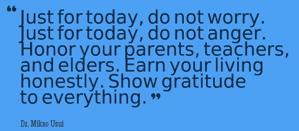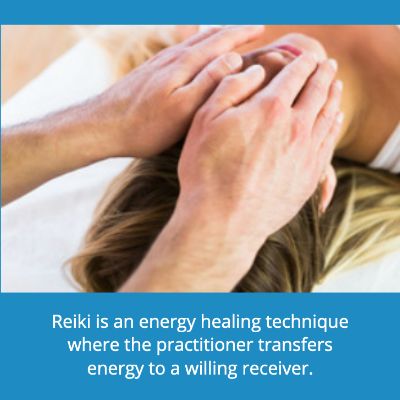- Home
- Asian Massage
- Reiki
As an Amazon Associate and affiliate with other programs, I may earn revenue from qualifying purchases through affiliate links. This does not affect the price you pay. Privacy Policy / Disclosures. This site is for educational purposes only.
What is Reiki Massage Therapy?
Although many people refer to reiki massage therapy, reiki is not a massage but is an energy healing technique based on a Japanese interpretation of the universal life force that animates living beings. Chinese call this force qi or chi and Indians call it prana. In the West, it's called spirit.
Reiki and massage therapy are highly complementary techniques, and some massage therapists use reiki. However, you don't have to be a professional to use this energy technique. Everyone can tap into an unlimited supply of "life force energy" to improve health, enhance the quality of life, and balance and amplify physical, mental, emotional, and spiritual energy.
What Happens in a Reiki Session
In a reiki session, the practitioner channels life force energy and directs that energy toward you. The goal isn't to manipulate muscles or tissues but to balance and clear energy to help bring your body into balance and support it's natural healing process.
For a typical treatment (not also involving massage), you lie fully clothed on a padded table. The practitioner uses a sequence of standardized hand placements, typically staying three to five minutes in each position, to transfer energy. The practitioner is adding to your energy, not manipulating or moving it around.
Practitioners generally place their hands over the body's major energy centers and organ systems. A session starts at your head, and then moves to your abdomen from just below the ribs to the lower belly. After you turn onto your stomach, the practitioner works from the top of the back to the tailbone. A full session usually takes about an hour.
Practitioners draw energy from the environment, not using their own personal energy. The transfer of energy depends on your ability to use it and willingness to receive it. Reiki works to the level you are willing and able to use the energy. If you aren't willing to receive the energy, the practitioner cannot force it on you.
People feel the energy in different ways, often experiencing it as warmth. Some feel a mild tingle and some feel a pulsing or throbbing sensation. Other people don't feel anything physically but may have mental or emotional sensations, such as calmness or peacefulness. Most people find a reiki massage deeply relaxing.
Types of Reiki

There are many forms of reiki. One of the key originators was Dr. Mikao Usui, and the Usui style is widely practiced. Other styles include:
- Five Element Seichem
- Imara Reiki
- Jinlap Reiki
- Karuna Reiki
- Raku Kei
- Saku Reiki
- The Radiance Technique
- Tibetan Reiki
What is Reiki Massage Training?
Generally, reiki training has three levels:
- First Degree training teaches students self-treatment and hands-on treatment for individuals. Several initiations open a student's energy channels so that the person will not use his/her own energy when giving reiki.
- Second Degree training teaches the student special techniques to enhance the level of energy transferred and how to give "distance" treatments. Distance treatment involves the transfer of energy without physically touching the persons receiving treatment.
- Third Degree, or Master Training, qualifies students to teach. This intensive training usually takes place over an extended time period and includes supervised teaching time.
More Information
International Association of Reiki Professionals
International Center for Reiki Training
The Massage Therapist’s Guide to Reiki
Study: Reiki Therapy for Pain, Anxiety and Quality of Life
Photo Credit: wavebreakmediamicro / 123RF Stock Photo





